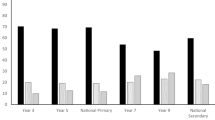Abstract
Proponents of private schooling claim that private high schools, on the average, more effectively promote measured academic achievement than public high schools. They have also argued that private high schools increase high school completion rates and improve college enrollment rates among high school graduates. Their antagonists, typically, hold that there is little or no difference between public and private high schools with respect to any of these outcomes. We address two of these school effectivenes issues by applying multiple-regression analysis to two SAT data sets for Florida and a national SAT data set. We ask whether there are differences between public and private high schools in promoting achievement as measured by the high-profile SAT verbal and math tests. At the same time, we are asking, at least implicity, if either public or private high schools provide an SAT soore advantage in promoting college enrollments. Our analysis finds a consistent advantage for public high schools with respect to SAT math attainment. For high schools generally, however, it seems clear that school effects outweigh the impact of socially ascribed traits, such as race, ethnicity, gender, and social class.
Similar content being viewed by others
References
Alexander, K., and Pallas, A. (1983). Private schools and public policy: New evidence on cognitive achievement in public and private schools.Sociology of Education 56: 170–182.
Austin, G., and Garber, H. (1982). The implications for society. In G. Austin and H. Garber (eds.),The Rise and Fall of National Test Scores. New York: Academic Press.
Bickel, R. (1986). Achievement and social ascription: A comparison of public and private high schools.Youth and Society 18: 99–126.
Bickel, R. (1990). Race, class, gender and the common school hypothesis. Paper presented at the American Educational Research Association, Boston, Massachusetts, April 16–20.
Bickel, R., and Chang, M. (1985). Public schools, private schools, and the common school ideal.The Urban Review 17: 75–97.
Bickel, R., and Chang, M. (1986). Public schools, private schools, and high school achievement.The High School Journal 69: 91–106.
Cain, G., and Goldberger, A. (1983). Public and private schools revisited.Sociology of Education 56: 208–218.
Chang, M. (1985). Gender differences in college entrance exam scores. Paper presented at the Southeast Regional Conference of Section G, American Educational Research Association, Tallahassee, Florida, March 14–16.
Coleman, J. (1989). Do students learn more in private schools than in public schools? Paper presented at the Fifth Annual Critical Issues Symposium, Tallahassee, Florida, March 22–25.
Coleman, J., and Hoffer, T. (1987).Public and Private High Schools: The Impact of Communities. New York: Basic Books.
Coleman, J., Hoffer, T., and Kilgore, S. (1982).High School Achievement. New York: Basic Books.
Crain, R., and Farrar, G. (1982). Achievement and prediction with school-level equations. Center for the Social Organization of Schools, Report No. 323. Baltimore: Johns Hopkins University.
Crouse, J. (1985). Does the SAT help colleges make better selection decisions?Harvard Educational Review 58: 195–219.
Falsey, B., and Heyns, B. (1984). The college channel.Sociology of Education 57: 111–122.
Goldberger, A., and Cain, G. (1982). The causal analysis of cognitive outcomes in the Coleman, Hoffer, and Kilgore report.Sociology of Education 55: 103–122.
Jackson, R. (1980). The SAT: A response to Slack and Porter's critical appraisal.Harvard Educational Review 50: 382–386.
Levin, H. (1976). A new model of school effectiveness. In W. Sewell, R. Featherman, and D. Hauser (eds.),Schooling and Achievement in American Society. New York: Academic Press.
Madaus, G., Airasian, P., and Kellaghan, T. (1980).School Effectiveness. New York: McGraw-Hill.
National Commission on Excellence in Education. (1983).A Nation at Risk. Reprinted in Missouri State Board of Education, 1982–1983 Report of the Public Schools of the State of Missouri, Jefferson City, Missouri.
Nyberg, D. (1986). The progress of our stupidity about students' intelligence.Chronicle of Higher Education 32: 96.
Pallas, A., and Alexander, K. (1983). Sex differences in quantitative SAT performance: Evidence on the differential coursework hypothesis.American Educational Research Journal 20: 165–182.
Powell, B., and Steelman, L. (1984). Variations in state SAT performance: Meaningful or misleading.Harvard Educational Review 54: 389–410.
Author information
Authors and Affiliations
Rights and permissions
About this article
Cite this article
Gibbins, N., Bickel, R. Comparing public and private high schools using three SAT data sets. Urban Rev 23, 101–115 (1991). https://doi.org/10.1007/BF01108040
Issue Date:
DOI: https://doi.org/10.1007/BF01108040




